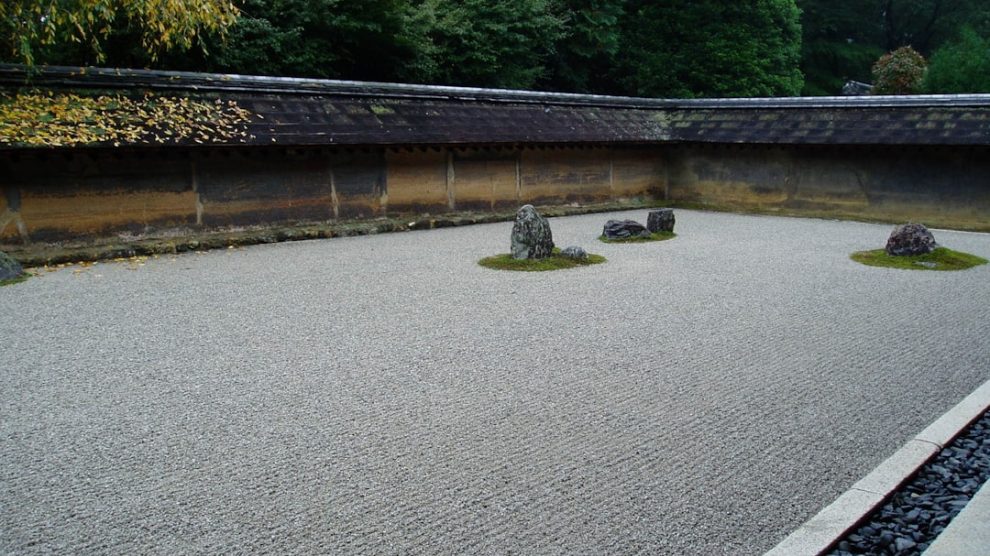Stoicism, a school of Hellenistic philosophy founded in Athens by Zeno of Citium in the early 3rd century BC, emphasizes the development of self-control and fortitude as a means to overcome destructive emotions. Central to Stoic thought is the idea that virtue, understood as wisdom, is the highest good. Stoics believe that living in accordance with nature and reason leads to a fulfilling life.
This philosophy teaches that while we cannot control external events, we can control our responses to them. The Stoics advocate for a rational approach to life, where individuals strive to maintain a clear distinction between what is within their control and what is not. The teachings of prominent Stoics such as Seneca, Epictetus, and Marcus Aurelius have endured through centuries, providing guidance on how to navigate the complexities of human existence.
They emphasize the importance of rationality, ethical behavior, and the cultivation of inner peace. For instance, Marcus Aurelius, in his “Meditations,” reflects on the transient nature of life and the importance of focusing on the present moment. This philosophical framework encourages individuals to cultivate a mindset that prioritizes virtue over external circumstances, fostering resilience in the face of adversity.
Key Takeaways
- Stoic philosophy emphasizes the importance of focusing on what is within our control and accepting what is not.
- Patience is a key virtue in Stoicism, as it allows individuals to remain calm and composed in the face of adversity.
- Practicing acceptance and detachment involves acknowledging and embracing the present moment, while detaching oneself from external outcomes.
- Developing emotional resilience in Stoicism involves understanding that challenges and setbacks are opportunities for growth and learning.
- Cultivating mindfulness and self-awareness enables individuals to better understand their emotions and reactions, leading to greater self-control and inner peace.
Recognizing the Importance of Patience in Stoicism
Patience is a cornerstone of Stoic philosophy, serving as a vital tool for navigating life’s challenges. In a world that often prioritizes instant gratification, the Stoic perspective on patience offers a refreshing counterpoint. Stoics understand that many aspects of life unfold at their own pace, and attempting to rush these processes can lead to frustration and disappointment.
By cultivating patience, individuals can develop a deeper understanding of themselves and their circumstances, allowing for more thoughtful responses rather than impulsive reactions. Moreover, patience is intricately linked to the Stoic practice of acceptance. The Stoics teach that one should accept the things they cannot change while focusing their energy on what they can influence.
This acceptance fosters a sense of tranquility, enabling individuals to endure hardships with grace. For example, Epictetus famously stated that it is not events themselves that disturb us, but our judgments about those events. By practicing patience, one can reframe their perceptions and approach challenges with a calm and rational mindset.
Practicing Acceptance and Detachment

Acceptance is a fundamental aspect of Stoicism that encourages individuals to embrace reality as it is rather than how they wish it to be. This practice involves recognizing the limits of one’s control and letting go of the desire to manipulate outcomes. Detachment does not imply indifference; rather, it signifies a healthy distance from emotional turmoil caused by external circumstances.
By practicing acceptance and detachment, individuals can cultivate a sense of inner peace that remains unshaken by life’s inevitable ups and downs. For instance, when faced with a setback at work or in personal relationships, a Stoic would reflect on the situation without becoming overly attached to their expectations or desires. Instead of lamenting what could have been, they would focus on what they can learn from the experience and how they can respond constructively.
This approach not only alleviates emotional suffering but also empowers individuals to take proactive steps toward improvement. The practice of acceptance allows for a more profound engagement with life, as it encourages individuals to appreciate each moment without being burdened by regret or anxiety about the future.
Developing Emotional Resilience
Emotional resilience is a key component of Stoic philosophy, enabling individuals to withstand life’s challenges with composure and strength. The Stoics believed that emotions should be understood and managed rather than suppressed or ignored. By developing emotional resilience, individuals can navigate adversity without being overwhelmed by negative feelings.
This resilience is cultivated through self-reflection, rational analysis, and the consistent application of Stoic principles. One effective method for building emotional resilience is through the practice of negative visualization, a technique advocated by many Stoic thinkers. This involves contemplating potential challenges or losses one might face in life.
By mentally preparing for adverse situations, individuals can reduce their emotional impact when such events occur. For example, considering the possibility of losing a job can help one appreciate their current employment more fully while also preparing them for the reality of job loss if it were to happen. This proactive approach fosters resilience by allowing individuals to confront their fears head-on rather than allowing anxiety to dictate their emotional state.
Cultivating Mindfulness and Self-Awareness
Mindfulness and self-awareness are integral to the practice of Stoicism, as they enable individuals to observe their thoughts and emotions without becoming entangled in them. The Stoics emphasized the importance of self-examination as a means to understand one’s motivations and reactions. By cultivating mindfulness, individuals can develop a clearer perspective on their experiences, allowing them to respond thoughtfully rather than react impulsively.
Practicing mindfulness involves being present in the moment and acknowledging one’s thoughts and feelings without judgment. This practice aligns closely with Stoic teachings that encourage individuals to reflect on their internal states and assess whether their reactions are rational or driven by irrational fears or desires. For instance, when faced with stress or anxiety about an upcoming event, a mindful approach would involve recognizing these feelings without becoming overwhelmed by them.
Instead of allowing anxiety to dictate behavior, one could take a step back, analyze the situation rationally, and choose a measured response.
Applying Stoic Principles to Challenging Situations

Stoicism provides practical tools for applying its principles in challenging situations, allowing individuals to navigate difficulties with grace and composure. When confronted with adversity—be it personal loss, professional setbacks, or interpersonal conflicts—Stoics advocate for a systematic approach grounded in rationality and virtue. This involves assessing the situation objectively, identifying what is within one’s control, and determining an appropriate course of action.
For example, consider an individual facing criticism at work. A Stoic response would involve reflecting on the feedback without becoming defensive or emotionally reactive. Instead of viewing criticism as a personal attack, one could analyze its validity and consider how it might contribute to personal growth.
By focusing on self-improvement rather than external validation, individuals can transform challenging situations into opportunities for development. This approach not only fosters resilience but also cultivates a sense of agency in navigating life’s complexities.
Utilizing Stoic Techniques for Managing Impatience
Impatience often arises from an expectation that things should unfold according to our timeline rather than accepting the natural pace of life. Stoicism offers several techniques for managing impatience effectively. One such technique is the practice of reframing expectations—recognizing that delays or obstacles are not inherently negative but rather opportunities for growth and reflection.
Another valuable technique is the use of journaling as a means of processing thoughts and emotions related to impatience. By writing down feelings of frustration or anxiety about waiting for outcomes, individuals can gain clarity on their thoughts and identify underlying beliefs driving their impatience. This reflective practice aligns with the Stoic emphasis on self-examination and can lead to greater self-awareness regarding one’s triggers for impatience.
Additionally, engaging in deep breathing exercises or mindfulness meditation can help ground individuals in the present moment when feelings of impatience arise. These practices encourage individuals to focus on their breath or bodily sensations rather than fixating on future outcomes. By cultivating this awareness, one can develop greater patience over time.
Integrating Patience into Everyday Life
Integrating patience into everyday life requires intentional practice and commitment to Stoic principles. One effective way to cultivate patience is through setting realistic expectations for oneself and others. Recognizing that everyone operates at different paces allows for greater empathy and understanding in interpersonal relationships.
This shift in perspective fosters patience not only toward oneself but also toward others who may be navigating their own challenges. Moreover, incorporating daily rituals that promote mindfulness can enhance one’s capacity for patience. Simple practices such as taking time each day for quiet reflection or engaging in activities that require sustained focus—like gardening or painting—can help train the mind to embrace slower rhythms.
These rituals serve as reminders that life unfolds at its own pace and that there is value in savoring each moment. In addition to personal practices, fostering an environment that encourages patience can be beneficial. Surrounding oneself with like-minded individuals who value patience and resilience can create a supportive community that reinforces these principles.
Engaging in discussions about Stoic philosophy or participating in group activities centered around mindfulness can further deepen one’s commitment to cultivating patience in everyday life. By integrating these practices into daily routines, individuals can gradually transform their relationship with time and develop a more patient outlook on life—one that aligns with the core tenets of Stoicism while enhancing overall well-being.
FAQs
What is Stoicism?
Stoicism is a school of philosophy that originated in ancient Greece, and it emphasizes the development of self-control and fortitude as a means of overcoming destructive emotions.
What is patience in the context of Stoicism?
In the context of Stoicism, patience is the ability to endure difficult circumstances without becoming upset or agitated. It involves maintaining a sense of calm and composure in the face of adversity.
How can Stoicism help in cultivating patience?
Stoicism provides practical techniques and principles for developing patience, such as understanding the nature of things beyond our control, practicing mindfulness, and reframing our perspective on challenging situations.
What are some Stoic practices for cultivating patience?
Stoic practices for cultivating patience include negative visualization, where one imagines worst-case scenarios to build resilience, and premeditatio malorum, which involves mentally preparing for potential obstacles.
What are the benefits of cultivating patience through Stoicism?
Cultivating patience through Stoicism can lead to greater emotional resilience, improved decision-making, and a more peaceful and contented state of mind. It can also enhance relationships and reduce stress.









Add Comment